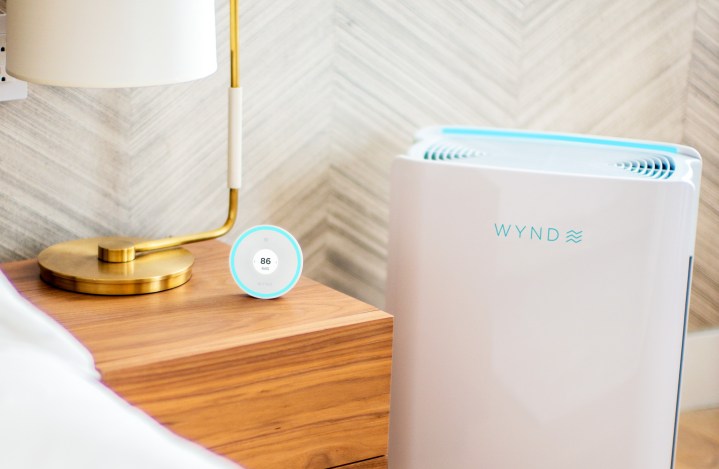
The world is getting to be a tougher and tougher place to take a breath, from the smoke coming from the California fires to the ordinary pollutants to which we’re all exposed on a daily basis. To help all of us make our homes a little safer, Wynd is introducing a bundle of two products that are designed to make your air cleaner.
Wynd is packaging an air quality monitor, dubbed the Wynd Halo, with a powerful room air purifier called the Wynd Home Purifier. They’re both designed to work with Wynd Halo app, turning these innovative new devices into smart ones.
The Wynd Halo contains a comprehensive set of 10 environmental sensors that track substances that can affect the health of you and your family, especially if they’re particularly sensitive to certain elements or have particular medical conditions. The device tracks allergens, odors, chemicals, mold, temperature, and humidity as well as unexpected influences such as noise and ambient light. It’s designed to monitor and improve a smart home environment for everyday activities such as work, sleep, and exercise. It even has an infant mode for babies.
The Wynd Halo tracks the yucky stuff in our personal ecosystems, so how do we get rid of them? The Halo is designed to work in sync with its sister product, the Wynd Home Purifier. This can clean up all the nasty things and they are also designed to integrate with third-party devices, including Nest’s smart thermostats and Alexa-enabled devices to integrate seamlessly into a smart home network.
The devices link seamlessly with the Wynd app, which also has a bunch of other features. Users can receive personalized recommendations to improve health and comfort, set timers and regularly scheduled events, and optimize rooms based on the user’s age, gender, location, and health.
The Halo device also incorporates a futuristic new technology called Air ID that reportedly blends raw hardware sensor data with machine learning and cloud contextual information to not only tell you general metrics about your immediate environment, but the actual composition of your air, including alerts about specific pollens, smoke, smog, and other nasty substances you might want to be aware of.
The devices are available via the company’s Kickstarter page. The two-device bundle that includes the air-quality monitor and the air purifier come in at $290, while the Wynd Halo can be had for $90 and the Wynd Home Purifier for $240, meaning the bundle will save you a neat $40 if bought together. They’re expected to ship in May 2019. As always, we offer words of caution about backing any crowdfunding project.


